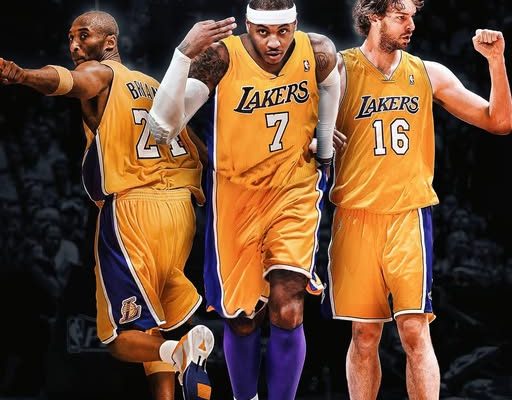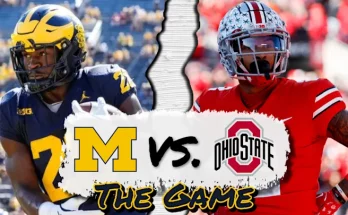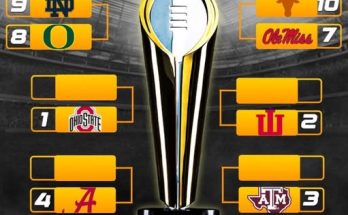Back in 2011, the NBA was on the verge of a seismic shift that could have altered the entire trajectory of the league and rewritten the history books for one of basketball’s most storied franchises. Carmelo Anthony, then in his prime and still one of the most lethal scorers in the game, has revealed that he came extremely close to teaming up with Kobe Bryant and Pau Gasol on the Los Angeles Lakers. At the time, Anthony was the face of the Denver Nuggets, a perennial All-Star with a knack for scoring from anywhere on the court and a reputation for shining in big moments. However, tensions had been mounting between him and the Nuggets front office as the team hovered in playoff contention but never truly threatened for a title. Anthony was approaching the end of his contract and the possibility of a trade loomed large over the season. While the basketball world remembers the blockbuster deal that ultimately sent him to the New York Knicks, Anthony has now made it clear that New York was never his first choice — in fact, he says he “never even thought about New York” until the deal with Los Angeles fell apart.
The proposed trade was as bold as it was intriguing: Anthony and his Nuggets teammate Nenê were set to be sent to the Lakers in exchange for Lamar Odom and Andrew Bynum. On paper, it was a move that could have positioned Los Angeles for another championship run while also giving Denver a strong frontcourt pairing to build around. The Lakers were fresh off back-to-back championships in 2009 and 2010, led by Kobe Bryant’s relentless competitive drive and Pau Gasol’s unmatched skill in the post. But in 2011, cracks were beginning to show in the team’s armor. Age and fatigue were starting to catch up to them, and the front office knew they needed a new star to help extend their championship window. Carmelo Anthony, with his offensive arsenal and ability to take over games, looked like the perfect piece to keep Kobe’s title hopes alive.
For Anthony, the idea of joining forces with Kobe and Gasol was tantalizing. Kobe was the ultimate competitor, a player Anthony deeply respected, and Gasol’s unselfish style of play made him the kind of big man who could complement almost any superstar. The Lakers’ championship pedigree and Hollywood market were equally appealing, giving Anthony a chance to compete for titles while raising his profile in one of the sport’s biggest stages. According to Anthony, the deal was essentially complete — “The deal was done,” he said, making it sound like the only thing left was to make it official.
The ramifications of such a trade are fascinating to imagine. Kobe, Anthony, and Gasol could have formed one of the most potent Big Threes in NBA history. With Anthony’s scoring punch on the wing, Kobe could have conserved energy for the postseason, and Gasol’s ability to stretch the floor and pass from the high post would have made the offense even more dynamic. Phil Jackson, still at the helm during that era, would have had another elite offensive weapon to incorporate into his Triangle offense. Anthony’s presence might have also alleviated some of the Lakers’ issues with perimeter scoring, which became glaring in the years after their 2010 championship.
But basketball history rarely unfolds as cleanly as it does in hypothetical scenarios. The deal never materialized, for reasons that remain partly shrouded in the complexities of NBA trade negotiations. Whether it was reluctance from Denver’s front office, second thoughts from the Lakers about giving up a young Bynum, or interference from other teams, the result was the same: Anthony never donned the purple and gold. Instead, the Knicks swooped in and finalized the blockbuster trade that sent Anthony to Madison Square Garden in February 2011. In exchange, New York gave up a haul of players, including Danilo Gallinari, Wilson Chandler, and Raymond Felton, along with draft picks, to secure the services of one of the league’s premier scorers.
From Anthony’s perspective, his move to New York became one of the defining chapters of his career, but it came with mixed results. While he had memorable moments and put up big numbers, the Knicks never became the championship contender he had hoped for, hampered by injuries, mismatched rosters, and an Eastern Conference dominated by LeBron James’ Miami Heat. In contrast, the Lakers’ fortunes also took a turn. They failed to win another championship during Kobe’s remaining years, dealing with injuries, roster instability, and the eventual departure of Phil Jackson.
Looking back, it’s impossible not to wonder what could have been if the 2011 Carmelo-to-LA deal had gone through. Kobe, known for pushing his teammates to their limits, might have brought out the best in Anthony, challenging him to improve his defense and embrace a championship mentality. Anthony, in turn, could have shouldered some of the scoring load that Kobe carried into his mid-30s, possibly extending Kobe’s prime and altering the outcome of subsequent seasons. Nenê’s inclusion in the trade could have given the Lakers another versatile big man to help them match up with the likes of the San Antonio Spurs and the Dallas Mavericks, who were contenders in the West at the time.
It’s also intriguing to think about the ripple effects around the league. Without Anthony going to New York, the Knicks might have pursued other stars or rebuilt through the draft. The Denver Nuggets, with Odom and Bynum, could have taken a different direction entirely, perhaps remaining competitive in the West for several more seasons. The balance of power in the league during the early 2010s might have shifted, with the Lakers potentially adding more championships to their storied history.
Anthony’s revelation about the near-deal also underscores how many blockbuster trades in the NBA come close to happening but fall apart at the last moment. Fans often hear rumors but rarely get confirmation from the players themselves about just how close these moves came to reality. For Anthony, the Lakers scenario wasn’t just idle chatter — it was a real, tangible opportunity that slipped through his fingers. And for Lakers fans, it’s one of those “what if” moments that will forever linger in the team’s rich history.
By 2011, Carmelo Anthony had already solidified himself as one of the league’s premier scorers, averaging over 24 points per game for his career to that point. His ability to operate in isolation, post up smaller defenders, and knock down mid-range jumpers made him a nightmare for opposing defenses. Pairing that with Kobe’s relentless scoring and leadership, along with Gasol’s finesse and skill, could have created an offensive juggernaut unmatched at the time.
Even though the trade never happened, the mere thought of it remains captivating. Anthony’s career took him through ups and downs, from playoff battles in Denver to high-scoring nights in New York, and eventually to stints with Oklahoma City, Houston, Portland, and the Lakers late in his career. Kobe Bryant’s legacy, of course, remains one of the most celebrated in sports, and Gasol will always be remembered as one of the most skilled big men of his generation.
The intersection of these careers in 2011 could have been something truly special, a union of talent, will, and championship pedigree that might have dominated the NBA landscape. Instead, fans are left with a tantalizing “almost,” a reminder that in professional sports, timing, negotiation, and circumstance can change everything. For Carmelo Anthony, it’s a story of what might have been, and for basketball fans, it’s a chance to imagine an alternate reality where two of the game’s greatest scorers shared the same locker room, chasing championships together under the bright lights of Los Angeles.
If that deal had gone through, it’s possible the Lakers would have extended their dynasty into the 2010s, and Carmelo Anthony’s career might be discussed in a completely different light today — one that included championship rings alongside his scoring titles and All-Star appearances. Instead, the NBA got a different story, one that still thrills fans but leaves room for plenty of speculation. And as Anthony himself admits, for a brief moment in 2011, the future looked set for him to wear the purple and gold — until fate, and front office decisions, took it in another direction.



